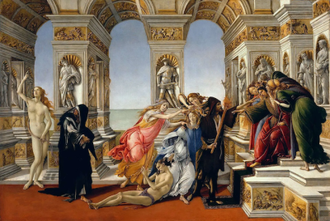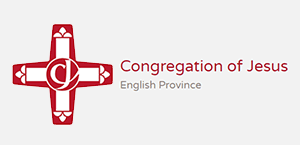Gospel in Art: Go and tell him his fault

Calumny of Apelles by Sandro Botticelli, Tempera on panel, 1497 © Uffizi Museum, Florence
Source: Christian Art
Gospel of 13 August 2025
Matthew 18:15-20
At that time: Jesus said to his disciples, 'If your brother sins against you, go and tell him his fault, between you and him alone. If he listens to you, you have gained your brother. But if he does not listen, take one or two others along with you, that every charge may be established by the evidence of two or three witnesses. If he refuses to listen to them, tell it to the church. And if he refuses to listen even to the church, let him be to you as a Gentile and a tax collector.
'Truly, I say to you, whatever you bind on earth shall be bound in heaven, and whatever you loose on earth shall be loosed in heaven. Again I say to you, if two of you agree on earth about anything they ask, it will be done for them by my Father in heaven. For where two or three are gathered in my name, there am I among them.'
Reflection on the painting
We all take a wrong turn from time to time. We say or do things that cause hurt or harm, whether we intend to or not. In such moments, it can be truly helpful if someone we know and trust has the courage to gently tell us where we may have gone astray. It isn't easy to do; it takes bravery to speak up, and it takes humility to listen and accept that the other person might be right.
In today's Gospel, Jesus speaks about the need, at times, to confront someone over a fault - not harshly, but with love. He saw this as part of the responsibility we bear for one another: to guide and encourage each other in living rightly. We are called to support each other in striving to do God's will. But this call must be balanced with what Jesus says elsewhere: before we try to remove the speck from someone else's eye, we should first take the plank out of our own. In other words, we must always be more aware of our own failings than the faults of others. If we ever need to correct someone, we do so with a real awareness of our own weaknesses, and always in a spirit of compassion and shared struggle.
Sandro Botticelli's The Calumny of Apelles is a powerful counter-example to the kind of fraternal correction Jesus speaks of in the Gospel. Instead of humble truth-telling grounded in prayer and love, this painting shows the destructive opposite: slander, pride, and rash judgment. On the far left stands Truth, nude and pointing upwards to heaven. The 'naked truth' as we sometime say. Beside her is Repentance, clothed in black, solemn and withdrawn. At the centre of the painting lies the innocent victim, half-naked and helpless on the ground, being dragged by the hair by Calumny (Slander), a richly dressed figure in white and blue who brandishes a flaming torch, symbolising the dangerous allure and spread of lies. Just behind her, Fraud carefully arranges Calumny's hair, while Conspiracy, clad in red and yellow, looms over the victim, reinforcing the atmosphere of betrayal. To the right stands Envy, a dark, hooded figure, who extends his hand towards the eyes of the king, literally clouding his vision. The king, seated on a throne and wearing the donkey's ears of King Midas (a symbol of foolishness) is flanked by Ignorance and Suspicion, who whisper into his ears and hold them tightly, steering his judgment. The scene captures the devastating power of false judgment and manipulation, warning against the danger of correcting others without humility, prayer, or a clear view of the truth.
LINKS
Gospel in Art: https://christian.art/
Today's Reflection: https://christian.art/daily-gospel-reading/matthew-18-15-20-2025/


















